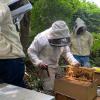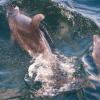Structure And Diversity Of A Riparian Forest At Kaieteur National Park, Guyana Research Paper
Kaieteur National Park, encompassing middle portions of the Potaro River, Guyana, contains a mosaic of habitats from exposed sandstone to riparian forests (100-450 m) with soils of the riparian forests of course white sand with very little peat. As part of an ecological study. two one-hectare plots were established in the Wallaba (Eperua)-mixed forest of the Potaro Plateau to document the species diversity and tree composition within the park. Approximately 133 species in 33 families comprised 1585 trees with a DBH ≥ 10 cm. Chamaecrista adiantifolia var. pteridophylla and Eperua falcata (Leguminosae-Caesalpinioideae) accounted for 26.1% of all trees inventoried in the plots. Of the three subfamilies of Leguminosae, Caesalpinioideae had over 300 stems/ha at Kaieteur. We used two 1 ha plots at each site to compare the forest at Kaieteur with the lowland forest of Kwakwani (Guyana) and Barro Colorado Island (Panama). Of these three, Kaieteur had the highest number of stems (69.6%) < 20 cm DBH and highest total basal area (66 m2/ha). Statistical analysis of the two plots at Kaieteur clearly indicates a high degree of floristic differences between the Kaieteur sites in this Wallaba (Eperua)-mixed forest. Although dominated by E. falcata and C. adiantifolia var. pteridophylia, the plots at Kaieteur indicate there are differences in the forest community over a very short distance. This may be attributable to subtle changes in microhabitats and/or species dynamics of the subdominant tree taxa of the Potaro Plateau.
Area of interest: Guyana
Year: 2008




